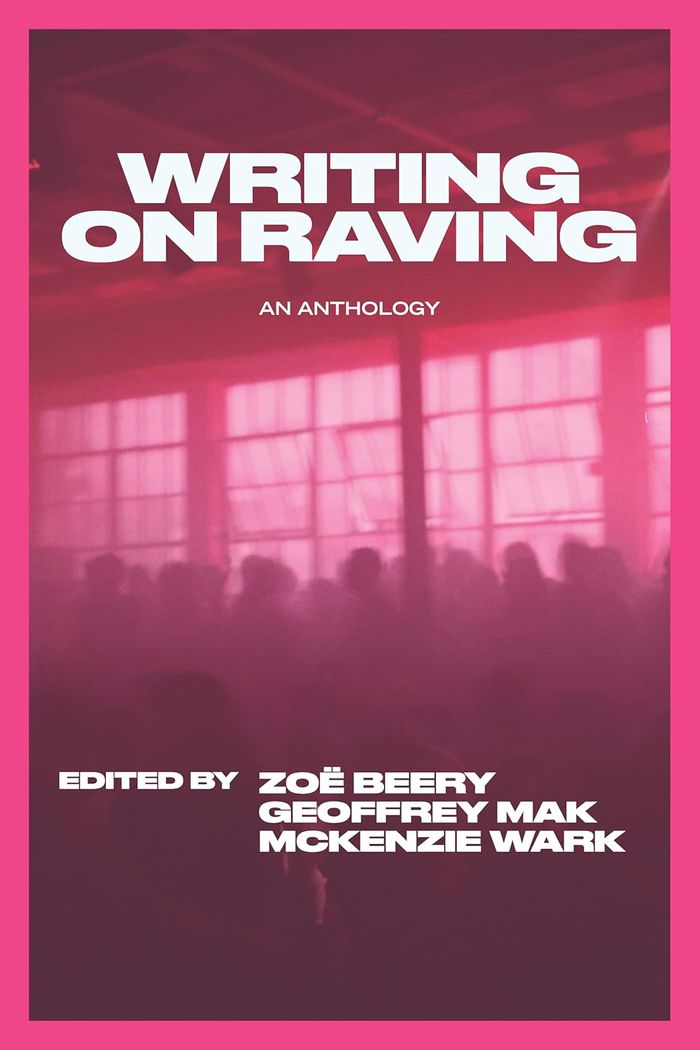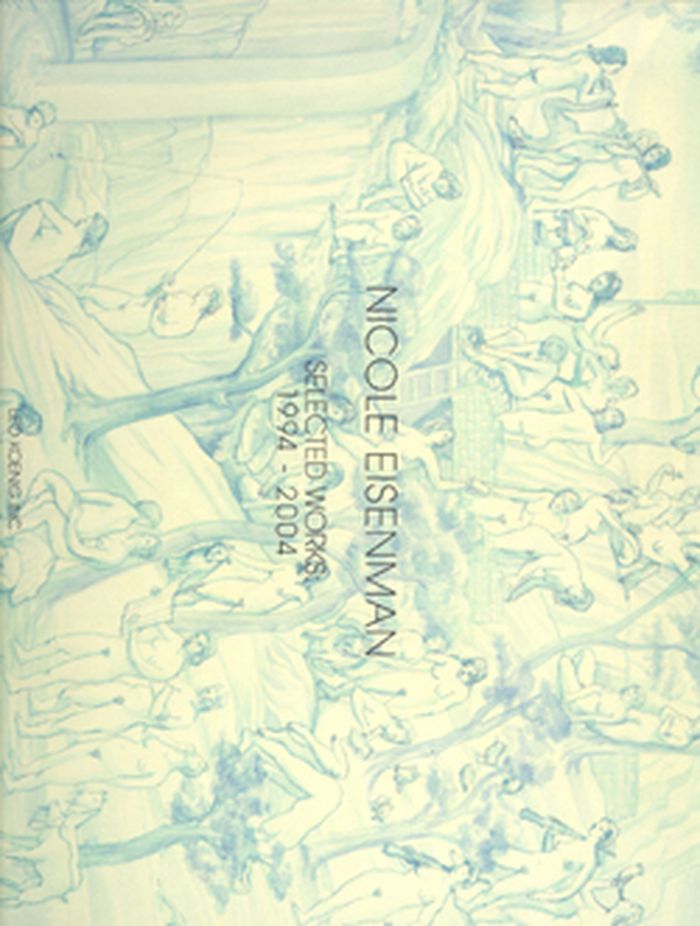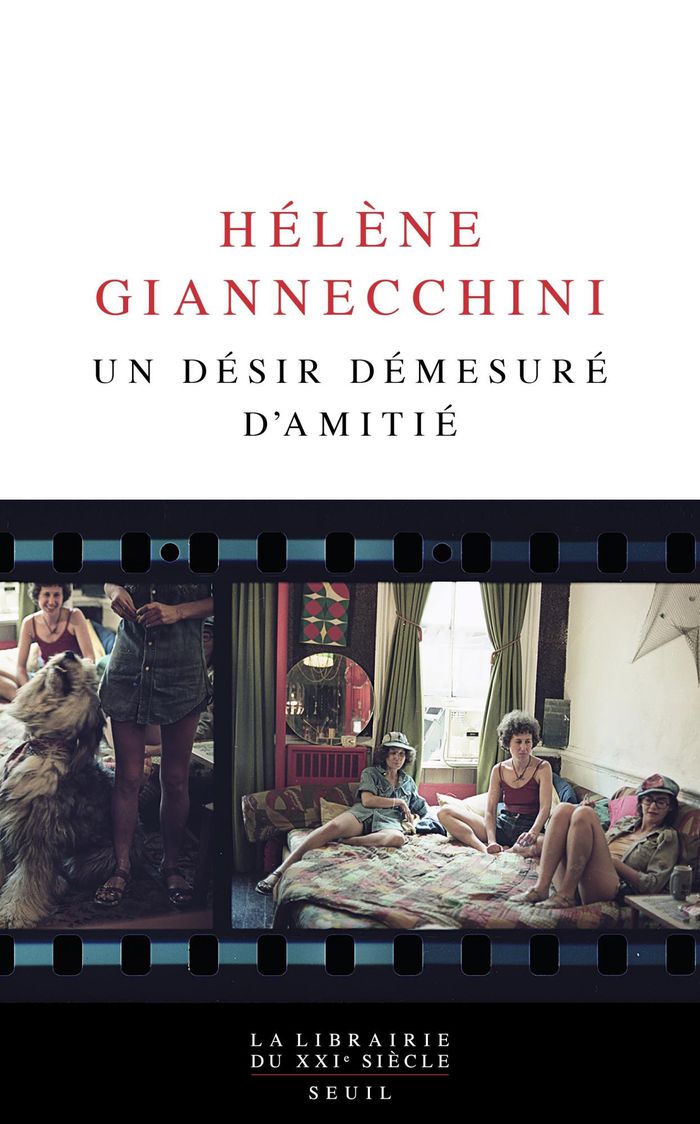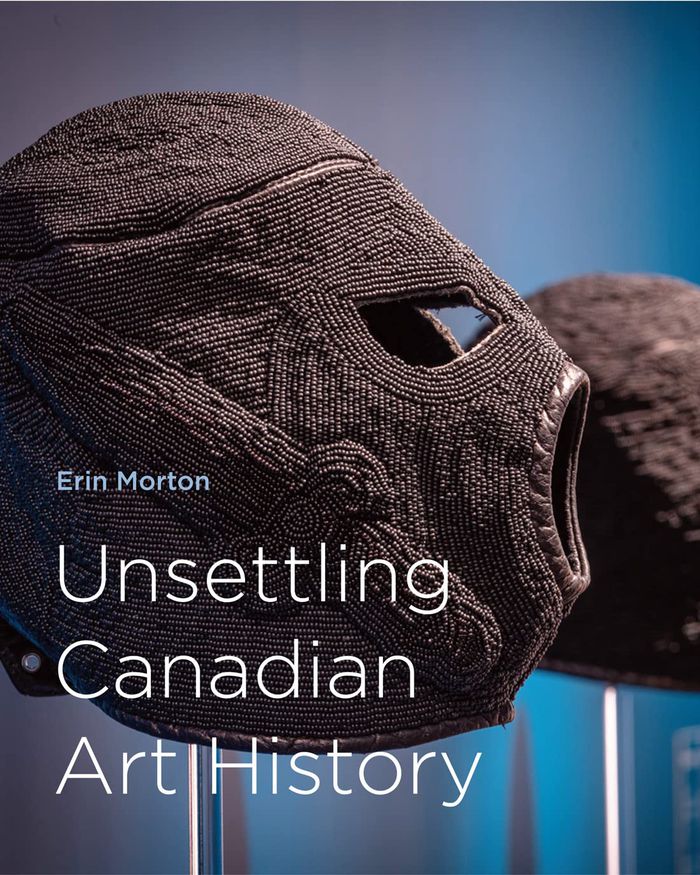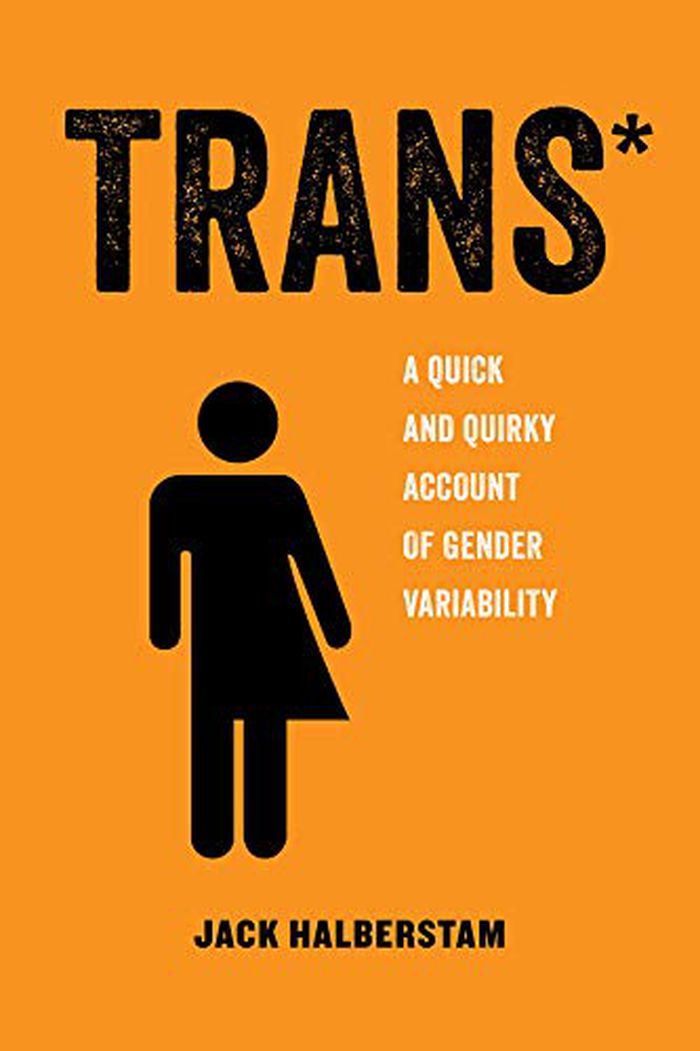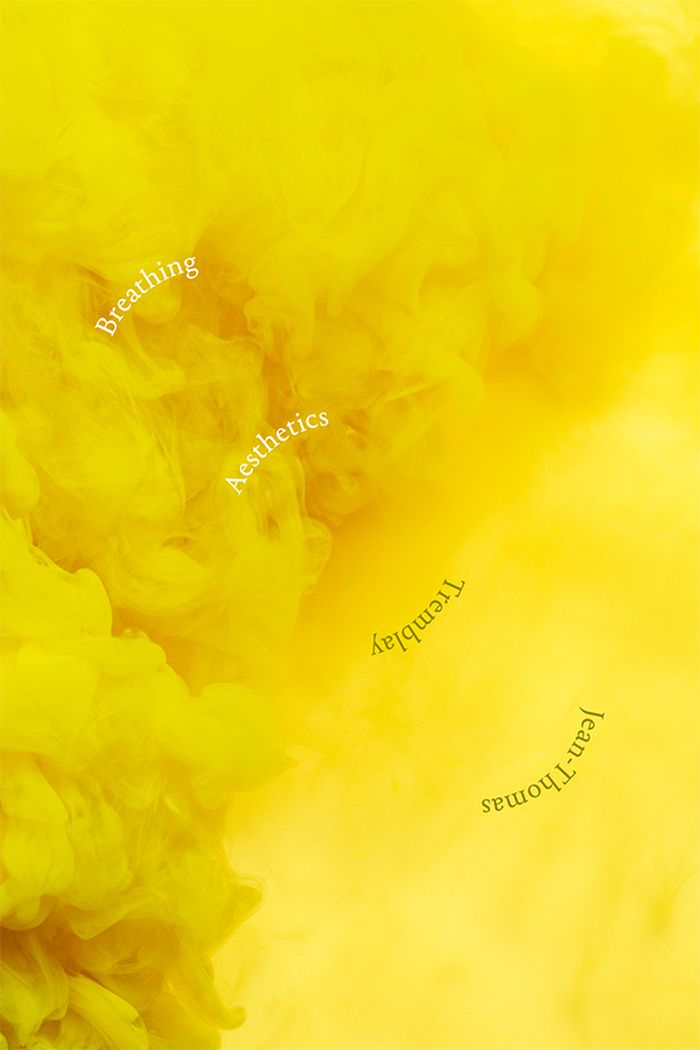books
Description:
380 pages : illustrations (some color), plans ; 28 cm.
München ; Hamburg : Dölling und Galitz Verlag, 2012.
Konstanty Gutschow,1902-1978 : modernes Denken und volksgemeinschaftliche Utopie eines Architekten / Sylvia Necker.
Actions:
Holdings:
Description:
380 pages : illustrations (some color), plans ; 28 cm.
books
München ; Hamburg : Dölling und Galitz Verlag, 2012.
Writing on raving
$30.95
(available in store)
Summary:
"Writing on Raving" is the definitive mix of voices from the Brooklyn underground rave scene and beyond, providing fresh language for the shared and infinitely varied experience of dancing through the night until the morning. New York rave culture is having a moment. The music, mostly, is techno, certain flavors of which became the soundtrack to a dancefloor culture that(...)
Writing on raving
Actions:
Price:
$30.95
(available in store)
Summary:
"Writing on Raving" is the definitive mix of voices from the Brooklyn underground rave scene and beyond, providing fresh language for the shared and infinitely varied experience of dancing through the night until the morning. New York rave culture is having a moment. The music, mostly, is techno, certain flavors of which became the soundtrack to a dancefloor culture that is queer in a different way to house music centered gay nightlife. Wark, Mak and Beery want to document and annotate and celebrate, but also critique, this world in the making. "Writing on raving" centers the New York scene, but isn’t limited to it. This is a book for all of those who need the rave. Who need to dance. Who have at some point needed that beat in their lives.
Social
books
$25.95
(available in store)
Summary:
Terres frontalières . La frontera . La nouvelle mestiza . Voici enfin traduit en français Borderlands/La Frontera, le chef-d'oeuvre de la féministe chicana Gloria Anzaldúa, le livre fondateur de la pensée queer décoloniale états-unienne.. Ce livre hybride mêle les genres [essai et poésie] et les langues [anglais, différentes formes d'espagnol et quelques touches de langue(...)
Terres frontalières, la frontera
Actions:
Price:
$25.95
(available in store)
Summary:
Terres frontalières . La frontera . La nouvelle mestiza . Voici enfin traduit en français Borderlands/La Frontera, le chef-d'oeuvre de la féministe chicana Gloria Anzaldúa, le livre fondateur de la pensée queer décoloniale états-unienne.. Ce livre hybride mêle les genres [essai et poésie] et les langues [anglais, différentes formes d'espagnol et quelques touches de langue indigène aztèque), pour mieux évoquer l'existence méconnue et précaire de celleux qui vivent entre deux mondes, à la frontière entre les cultures et les langues : les Chicanx dans la culture anglo-saxonne, les femmes dans la culture hispanique, les lesbiennes dans le monde hétéronormé, etc. Pour Anzaldúa, la frontière ne délimite pas des espaces, géographiques ou symboliques. Au contraire, elle crée de nouveaux territoires, les Borderlands. Dans ces « Terres frontalières » se construit une identité autre, « la nouvelle mestiza », qui rend possibles des façons inédites d'être au monde.
books
October 2024
Social
$65.00
(available to order)
Summary:
This first monograph devoted to the work of the influential and transgressive New York City painter of all things excessive, queer, abject, kitsch and twisted features selected works from 1994-2004--including drawings, paintings, collages and installations. Eisenman's work runs the gamut of visual references from Surrealism to Pointillism to WPA murals to name but a few,(...)
Contemporary Art Monographs
January 2008
Nicole Eisenman selected works: 1994-2004
Actions:
Price:
$65.00
(available to order)
Summary:
This first monograph devoted to the work of the influential and transgressive New York City painter of all things excessive, queer, abject, kitsch and twisted features selected works from 1994-2004--including drawings, paintings, collages and installations. Eisenman's work runs the gamut of visual references from Surrealism to Pointillism to WPA murals to name but a few, deftly moving from orgiastic crowds to Dionysian sacrifices, minotaur hunts and romps through art history and pop culture. Yet the wit and scope of Eisenman's vision often disguise the intimacy of her work. Here, cliches are turned inside out, gender roles are questioned, and one is engaged without fully realizing that the lushly painted scenes are always revealing something very personal. Features an essay by the painter Amy Sillman, a "panel discussion" between some of Eisenman's paintings by Matt Sharpe, and a biography.
Contemporary Art Monographs
Un désir démesuré d'amitié
$38.95
(available in store)
Summary:
Comment parler d’amitié, raconter cette autre famille que l’on dit choisie et qui permet d’inventer de nouvelles formes de vie ? La narratrice part à la recherche de son passé et explore la multiplicité des liens à l’oeuvre dans son existence. Traversé de photographies inédites provenant d’archives queer, ce livre puissant et sensible est un roman de l’amitié, une(...)
Un désir démesuré d'amitié
Actions:
Price:
$38.95
(available in store)
Summary:
Comment parler d’amitié, raconter cette autre famille que l’on dit choisie et qui permet d’inventer de nouvelles formes de vie ? La narratrice part à la recherche de son passé et explore la multiplicité des liens à l’oeuvre dans son existence. Traversé de photographies inédites provenant d’archives queer, ce livre puissant et sensible est un roman de l’amitié, une tentative pour dire la puissance politique de ce sentiment et sa force de réinvention. « Un désir démesuré d'amitié » interroge plus largement la question de la filiation : comment se composer une généalogie alternative, sauver de l’oubli les vies que la mémoire majoritaire dédaigne pour s’inscrire dans un récit non plus seulement intime mais collectif ? Car l’enquête menée ici est aussi destinée à d’autres : « Je me dis que quitte à s’inventer de nouvelles histoires de famille, autant les mettre en commun. »
Social
$58.95
(available in store)
Summary:
Les revendications féministes actuelles dans le domaine de l’architecture s’enracinent dans des décennies de réflexion critique, de militantisme politique, théorique et professionnel. Documentant l’engagement de plusieurs générations de penseurs-euses féministes, cette anthologie fait entendre quelques-unes des voix pionnières qui se sont élevées pour interroger le champ(...)
Des voix s'élèvent : Féminismes et architecture
Actions:
Price:
$58.95
(available in store)
Summary:
Les revendications féministes actuelles dans le domaine de l’architecture s’enracinent dans des décennies de réflexion critique, de militantisme politique, théorique et professionnel. Documentant l’engagement de plusieurs générations de penseurs-euses féministes, cette anthologie fait entendre quelques-unes des voix pionnières qui se sont élevées pour interroger le champ de l’architecture dans toutes ses dimensions, ses mécanismes sociaux, ses modes de production intellectuelle et professionnelle. Publiés entre 1977 et 1999, les douze textes fondateurs sélectionnés et présentés par la chercheuse Stéphanie Dadour éclairent un moment oublié de l’histoire de l’architecture nord-américaine. À une période où des notions fondamentales comme genre, intersectionnalité et queer sont forgées et progressivement introduites en architecture, les discours croisés de ces praticien-nes, théoricien-nes, historien-nes ou commissaires d’expositions dessinent un mouvement collectif qui n’existait pas auparavant et qui marquera indéfectiblement la littérature architecturale ultérieure.
Gender Theory in Architecture
$55.00
(available to order)
Summary:
Bringing together fifteen scholars of art and culture, ''Unsettling Canadian art history'' addresses the visual and material culture of settler colonialism, enslavement, and racialized diasporas in the contested white settler state of Canada. This collection offers new avenues for scholarship on art, archives, and creative practice by rethinking histories of Canadian(...)
Unsettling Canadian Art History
Actions:
Price:
$55.00
(available to order)
Summary:
Bringing together fifteen scholars of art and culture, ''Unsettling Canadian art history'' addresses the visual and material culture of settler colonialism, enslavement, and racialized diasporas in the contested white settler state of Canada. This collection offers new avenues for scholarship on art, archives, and creative practice by rethinking histories of Canadian colonialisms from Black, Indigenous, racialized, feminist, queer, trans, and Two-Spirit perspectives. Writing across many positionalities, contributors offer chapters that disrupt colonial archives of art and culture, excavating and reconstructing radical Black, Indigenous, and racialized diasporic creation and experience. Exploring the racist frameworks that continue to erase histories of violence and resistance, this book imagines the expansive possibilities of a decolonial future. ''Unsettling Canadian art history'' affirms the importance of collaborative conversations and work in the effort to unsettle scholarship in Canadian art and culture.
$64.95
(available to order)
Summary:
A literary and cultural history of the intimate space of the eighteenth-century closet?and how it fired the imaginations of Pepys, Sterne, Swift, and so many other writers Long before it was a hidden storage space or a metaphor for queer and trans shame, the closet was one of the most charged settings in English architecture. This private room provided seclusion for(...)
The closet: the eighteenth-century architecture of intimacy
Actions:
Price:
$64.95
(available to order)
Summary:
A literary and cultural history of the intimate space of the eighteenth-century closet?and how it fired the imaginations of Pepys, Sterne, Swift, and so many other writers Long before it was a hidden storage space or a metaphor for queer and trans shame, the closet was one of the most charged settings in English architecture. This private room provided seclusion for reading, writing, praying, dressing, and collecting?and for talking in select company. In their closets, kings and duchesses shared secrets with favorites, midwives and apothecaries dispensed remedies, and newly wealthy men and women expanded their social networks. In 'The Closet', Danielle Bobker presents a literary and cultural history of these sites of extrafamilial intimacy, revealing how, as they proliferated both in buildings and in books, closets also became powerful symbols of the unstable virtual intimacy of the first mass-medium of print.
Architectural Theory
$24.00
(available to order)
Summary:
In the last decade, public discussions of transgender issues have increased exponentially. However, with this increased visibility has come not just power, but regulation, both in favor of and against trans people. What was once regarded as an unusual or even unfortunate disorder has become an accepted articulation of gendered embodiment as well as a new site for(...)
Trans*: A quick and quirky account of gender variability
Actions:
Price:
$24.00
(available to order)
Summary:
In the last decade, public discussions of transgender issues have increased exponentially. However, with this increased visibility has come not just power, but regulation, both in favor of and against trans people. What was once regarded as an unusual or even unfortunate disorder has become an accepted articulation of gendered embodiment as well as a new site for political activism and political recognition. What happened in the last few decades to prompt such an extensive rethinking of our understanding of gendered embodiment? How did a stigmatized identity become so central to U.S. and European articulations of self? And how have people responded to the new definitions and understanding of sex and the gendered body? In ''Trans*,'' Jack Halberstam explores these recent shifts in the meaning of the gendered body and representation, and explores the possibilities of a nongendered, gender-optional, or gender-queer future.
Social
Breathing aesthetics
$33.95
(available in store)
Summary:
In this book, Jean-Thomas Tremblay argues that difficult breathing indexes the uneven distribution of risk in a contemporary era marked by the increasing contamination, weaponization, and monetization of air. Tremblay shows how biopolitical and necropolitical forces tied to the continuation of extractive capitalism, imperialism, and structural racism are embodied and(...)
Breathing aesthetics
Actions:
Price:
$33.95
(available in store)
Summary:
In this book, Jean-Thomas Tremblay argues that difficult breathing indexes the uneven distribution of risk in a contemporary era marked by the increasing contamination, weaponization, and monetization of air. Tremblay shows how biopolitical and necropolitical forces tied to the continuation of extractive capitalism, imperialism, and structural racism are embodied and experienced through respiration. They identify responses to the crisis in breathing in aesthetic practices ranging from the film work of Cuban American artist Ana Mendieta to the disability diaries of Bob Flanagan, to the Black queer speculative fiction of Renee Gladman. In readings of these and other minoritarian works of experimental film, endurance performance, ecopoetics, and cinema-vérité, Tremblay contends that articulations of survival now depend on the management and dispersal of respiratory hazards. In so doing, they reveal how an aesthetic attention to breathing generates historically, culturally, and environmentally situated tactics and strategies for living under precarity.
Critical Theory
